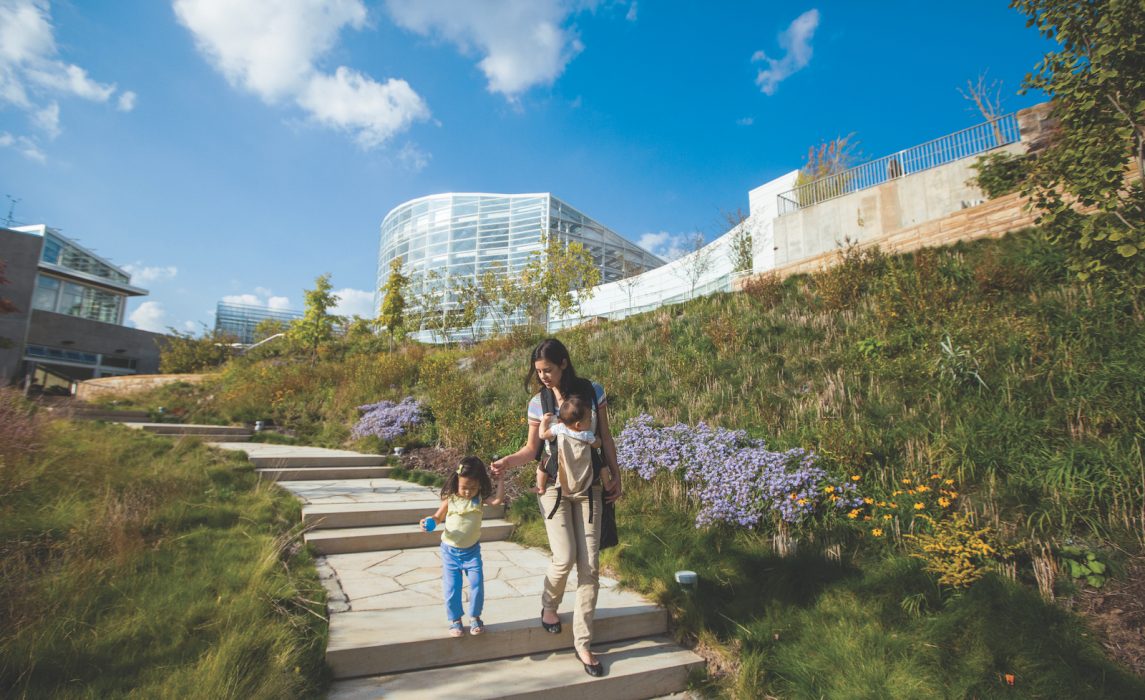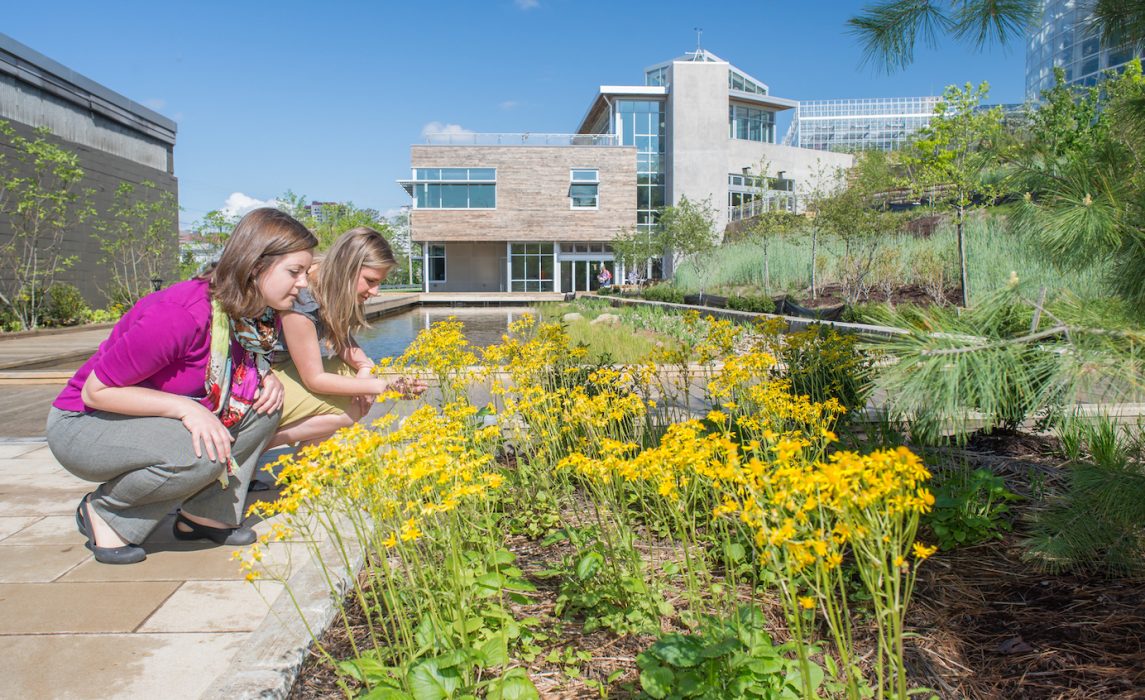Under the leadership of Richard Piacentini, the Phipps Conservatory and Botanical Garden’s Center for Sustainable Landscapes (CSL) challenges the sustainable design world to align building, operations, and programs with their values, and to continue to explore the connections between human and environmental health.
At the CSL, the future of green lies in the intersection among people, plants, health, and beauty. Phipps aims to blur the line between natural environments and our buildings and demonstrate the beauty of living in harmony with nature. The design team constructed a fully-integrated landscape and building that resulted in an unprecedented model of systems-based design, a research platform, and a compelling educational showcase for 400,000-plus annual visitors.
In fact, it is the first building in the world to simultaneously achieve LEED Platinum, SITES Platinum, WELL Platinum, and Living Building Challenge.
The site was a former brownfield that the design team transformed into a landscape comprised of more than 150 species of native plants strategically placed to reflect environmental adaptations and provide food and habitat to wildlife.
The project is also net-zero water, managing all storm and sanitary water, and has managed a 10-year storm through vegetation-based systems, including green roofs, rain gardens, and bioswales. No potable water has been used for irrigation since the landscape’s establishment period. Annually, approximately 500,000 gallons of rooftop runoff offset the conservatory’s irrigation demand.
The project is a high-performance and beautiful landscape; a living laboratory to inform the design of other sites through published research and exemplary performance and showcases sustainable landscaping to a broad audience.


